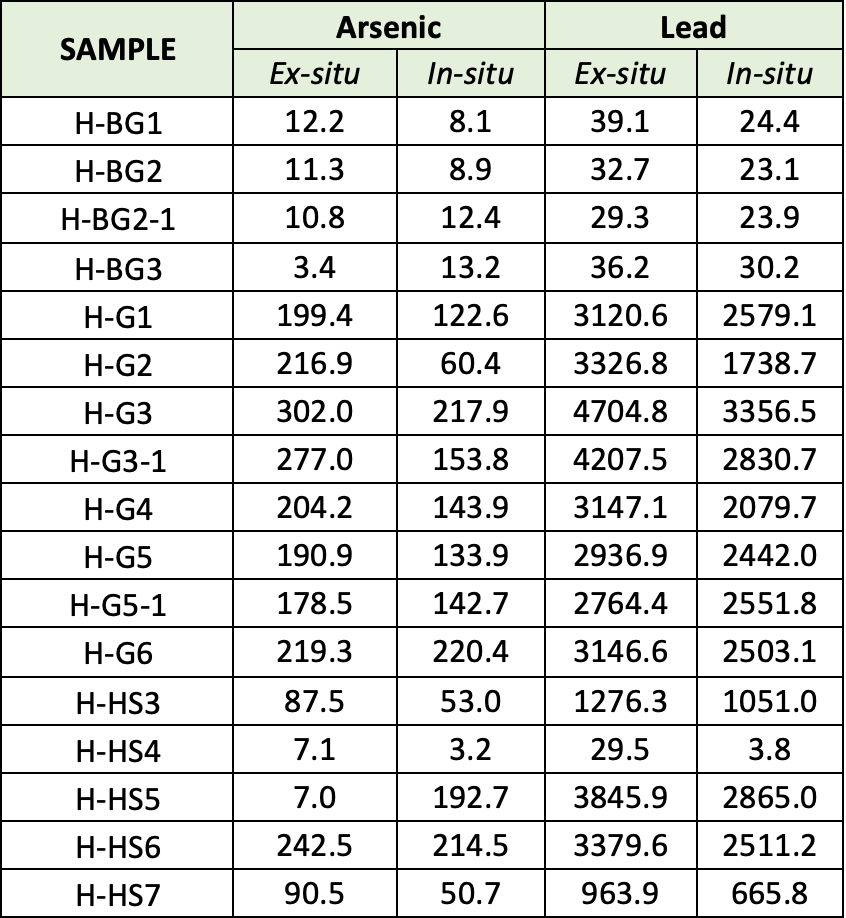

Arsenic and lead were identified as COCs for human health risk based on the XRF analysis results. The Arizona Soil Remediation Standards (AZSRS) for residential areas are 10 ppm for arsenic and 400 ppm for lead; for non-residential areas, the standards for arsenic and lead are 10 ppm and 800 ppm, respectively.
Spatial distribution maps below show the spatial distribution of lead. Green dots represent individual samples below the AZSRS residential standard, yellow pins represent concentrations between the AZSRS residential and non-residential standard, and orange and red dots indicate samples exceeding the non-residential limit.

Figure 1. Lead Distribution Map

Figure 2. Arsenic Distribution Map
An analysis to compare ex-situ XRF (dried, sieved soil) results to in-situ XRF (readings taken in the field) results was performed to assess the relationship between the XRF analysis done onsite and, in the laboratory, post-sieving.
Table 1. Ex-situ vs. in-situ XRF results

In order to determine 50% and 95% exposure point concentrations for the risk analysis, histograms were developed for each DU with distributed data for each COC. The data were transformed by taking the natural logarithm of the values. These values were used to create new histograms.


Fig 1. DU-1 arsenic logarithmic concentration distribution
Fig 2. DU-1 Lead logarithmic concentration distribution


Fig 3. DU-2 arsenic logarithmic concentration distribution
Fig 4. DU-2 Lead logarithmic concentration distribution
created with
Website Builder Software .